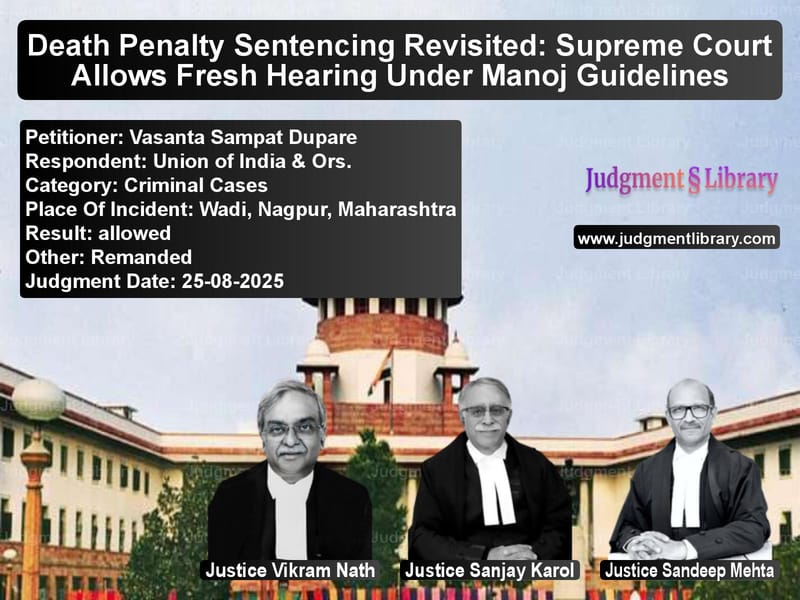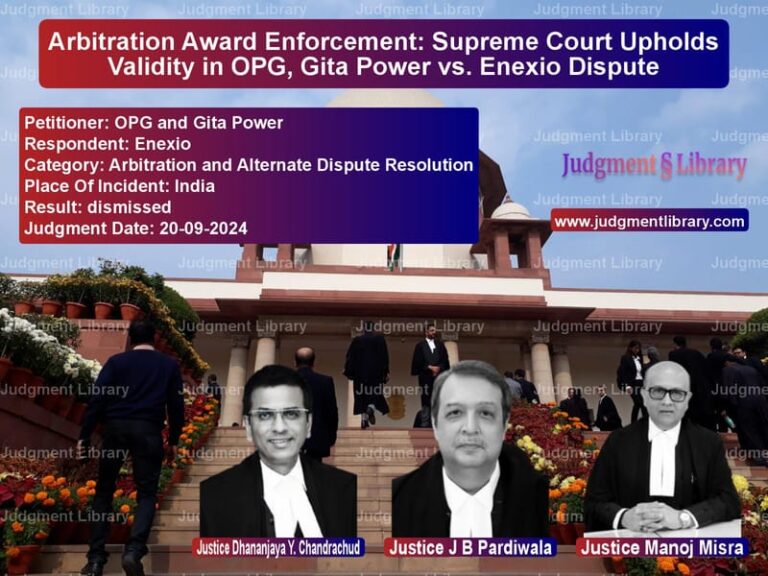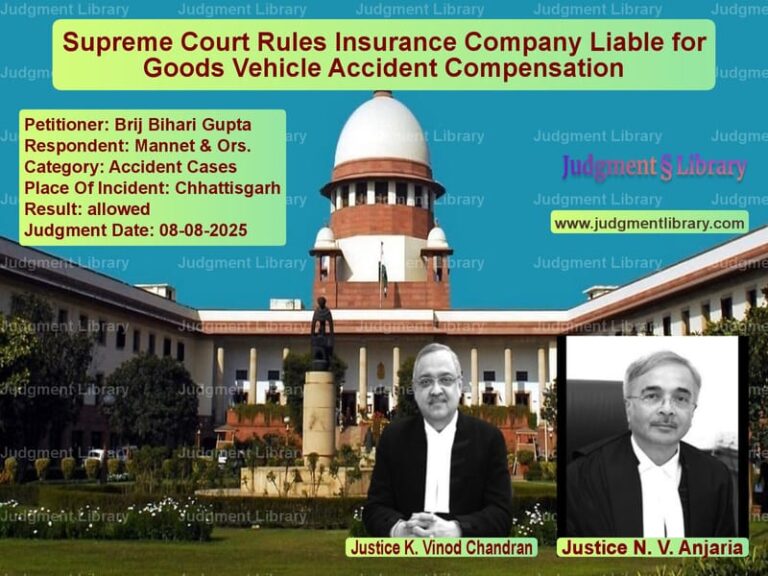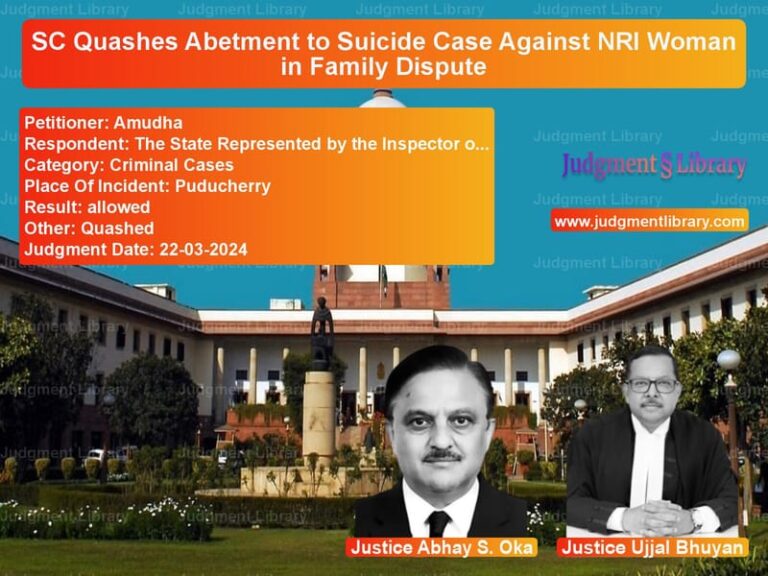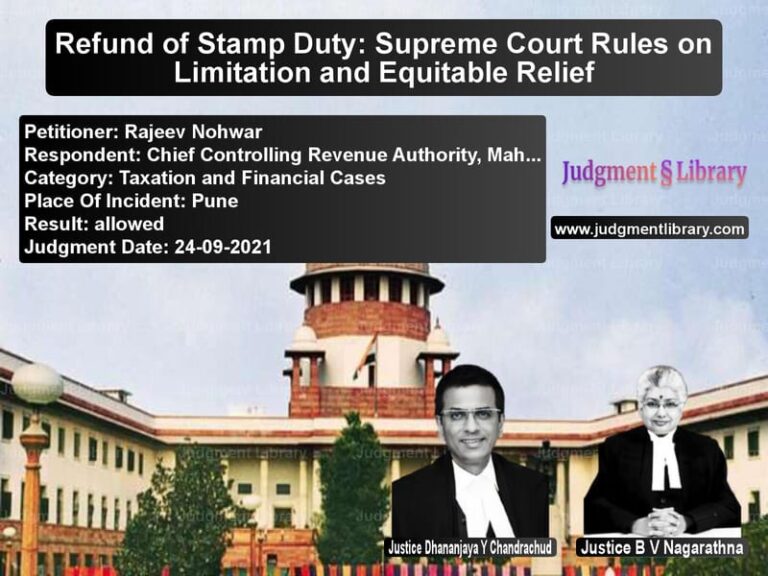Death Penalty Sentencing Revisited: Supreme Court Allows Fresh Hearing Under Manoj Guidelines
In a landmark judgment that reaffirms the constitutional sanctity of life and dignity, the Supreme Court of India has opened the door for death row convicts to seek fresh sentencing hearings based on the procedural safeguards established in the Manoj vs. State of Madhya Pradesh case. The case of Vasanta Sampat Dupare, convicted for the brutal sexual assault and murder of a four-year-old girl in 2008, has become the testing ground for whether constitutional courts can revisit capital sentences that have attained finality through the ordinary judicial process.
The Court began its judgment with powerful constitutional reflections, stating that “The majesty of our Constitution lies not in the might of the State but in its restraint. When the Court contemplates the ultimate punishment, i.e. the Capital Punishment, it enters a domain where justice must be tempered by conscience and guided by the unwavering promises of equality, dignity and fair procedure.” This philosophical foundation set the stage for a detailed examination of whether Article 32 of the Constitution could be invoked to reopen sentencing in capital cases where new procedural safeguards had emerged after final judgment.
The Case Background
The petitioner, Vasanta Sampat Dupare, was convicted for luring a four-year-old girl from her home in Wadi, Nagpur, on April 3, 2008, sexually assaulting her, strangling her to death, and attempting to conceal her body. His conviction and death sentence were confirmed by the Supreme Court in 2014, his review petition was dismissed in 2017, and both his mercy petitions to the Governor of Maharashtra and the President of India were rejected in 2022 and 2023 respectively.
However, during the pendency of these proceedings, significant legal developments occurred. The Supreme Court’s judgment in Manoj vs. State of Madhya Pradesh in 2023 established comprehensive guidelines for collecting mitigating circumstances in death penalty cases, requiring psychiatric evaluations, social background reports, and jail conduct assessments. Additionally, medical records revealed that Dupare was suffering from major depressive disorder, psychotic features, and organic brain pathology, conditions that had not been properly assessed during his original sentencing.
The Legal Arguments
Mr. Gopal Sankarnarayanan, learned Senior Counsel for the petitioner, advanced several crucial arguments. He contended that “the death sentence was affirmed in 2017 without the benefit of the sentencing protocol subsequently mandated in Manoj (supra). The judgment in Manoj (supra) requires Trial Courts and the State to place before the Judge comprehensive mitigation circumstances, including family history, socio-economic background, psychiatric and psychological evaluation, jail-conduct data, and probation reports and to afford the defence an equal opportunity to rebut.”
He further argued that “the evolution of sentencing law in Manoj (supra) and the pending Constitution Bench reference in Suo Motu W.P. (Crl.) No. 1 of 2022 together constitute a ‘substantial change in law’. Applying the settled rule of beneficial construction, those developments must operate retrospectively in favour of a condemned prisoner whose sentence is yet to be executed.”
The petitioner’s counsel also highlighted the medical evidence, stating that “the prison medical records, 3 independent psychiatric opinions of 2017, and the detailed psychometric evaluation of the Petitioner by Clinical Psychologist, Mr. Swapnil Bhopi, on 17.06.2022, now demonstrate that the Petitioner suffers from a Specific Learning Disability coupled with low intellectual functioning; chronic frontal-lobe infarct and cervical myelopathy; and major depressive disorder with psychotic features.”
On the other side, Mr. K.M. Nataraj, learned Additional Solicitor General for the Union of India, and Dr. Birendra Saraf, learned Advocate General for Maharashtra, opposed the petition vigorously. They argued that “the present petition under Article 32 of the Constitution of India is an impermissible attempt to reopen the judgment of this Court dated 26.11.2014, which has attained finality after dismissal of Review Petition (Crl.) Nos. 637-638 of 2015, and later rejection of mercy petitions by both the Governor and the President of India.”
The State representatives contended that “the sentencing guidelines spelt out in Manoj (supra) are prospective in operation. They are directed to Trial Courts going ahead as can be deduced from reading the judgement, and they do not authorise the wholesale reopening of cases finally decided years before, especially after rejection of constitutional clemency. To hold otherwise would undermine certainty in criminal justice and flood the system with stale challenges.”
The Court’s Constitutional Analysis
The Supreme Court delivered a comprehensive judgment examining the scope of Article 32 in capital cases. The Court held that “death-sentence cases stand apart because the punishment extinguishes the right to life in an irreversible way, and that singular feature obliges this Court to keep the door of constitutional review open even after the ordinary appellate and review avenues have closed.”
The Court emphasized that “Article 32 of the Constitution of India, therefore, remains available whenever a supervening fact, such as inordinate delay, emergent mental illness, or a parity-based anomaly, or a subsequently recognised procedural guarantee throws the legitimacy of a capital sentence into doubt. The power to intervene under Article 32 of the Constitution of India is meant to prevent the Constitution from being stymied by formal finality when a human life hangs in the balance.”
Regarding the Manoj guidelines, the Court observed that “these requirements are not administrative niceties, but they exist to give substantive content to the constitutional mandate that punishment should be individually tailored and proportionate. Since Manoj (supra), an institutional practice has emerged whereby this Court routinely calls for the mandated reports before deciding appeals in capital punishment cases.”
The Blackstonian Theory and Retrospectivity
Justice Sanjay Karol, in his concurring opinion, explored the Blackstonian theory of judicial decision-making, noting that “the role of the Court is not to create new laws but to uphold and explain existing ones. Judges are seen as discovering or interpreting the correct law rather than making law themselves; the law is considered to have always existed as it is.”
He further explained that “when a previous decision is overruled, it means the earlier rule was never truly the law, and all actions taken based on that supposed rule are subject to the new, correct legal determination.” This theoretical foundation supported the conclusion that the Manoj guidelines should apply retrospectively.
The Final Ruling
The Supreme Court allowed the writ petition, holding that “Article 32 of the Constitution of India empowers this Court in cases related to capital punishment to reopen the sentencing stage where the accused has been condemned to death penalty without ensuring that the guidelines mandated in Manoj (supra) were followed.”
The Court specifically clarified that “the finding of guilt recorded against the petitioner is left untouched. Nothing in this judgment shall be read as a comment, direct or implied, on the evidence that sustained conviction or on any defence that may have been raised at trial. Our intervention is strictly confined to the issue of sentence.”
The Court directed that “the sentence of death affirmed by this Court on 03 May 2017 is, for the present, set aside, and the matter is remitted to this Court for a fresh hearing on sentence alone, to be conducted in conformity with the directions in Manoj (supra).”
This judgment represents a significant evolution in India’s death penalty jurisprudence, recognizing that procedural safeguards in capital sentencing are not mere technicalities but fundamental constitutional requirements. By keeping the constitutional door open even after final judgment, the Supreme Court has reaffirmed that in matters of life and death, the Constitution’s protective embrace must remain available to prevent irreversible injustice.
Petitioner Name: Vasanta Sampat Dupare.Respondent Name: Union of India & Ors..Judgment By: Justice Vikram Nath, Justice Sanjay Karol, Justice Sandeep Mehta.Place Of Incident: Wadi, Nagpur, Maharashtra.Judgment Date: 25-08-2025.Result: allowed.
Don’t miss out on the full details! Download the complete judgment in PDF format below and gain valuable insights instantly!
Download Judgment: vasanta-sampat-dupar-vs-union-of-india-&-ors-supreme-court-of-india-judgment-dated-25-08-2025.pdf
Directly Download Judgment: Directly download this Judgment
See all petitions in Murder Cases
See all petitions in Fundamental Rights
See all petitions in Judgment by Vikram Nath
See all petitions in Judgment by Sanjay Karol
See all petitions in Judgment by Sandeep Mehta
See all petitions in allowed
See all petitions in Remanded
See all petitions in supreme court of India judgments August 2025
See all petitions in 2025 judgments
See all posts in Criminal Cases Category
See all allowed petitions in Criminal Cases Category
See all Dismissed petitions in Criminal Cases Category
See all partially allowed petitions in Criminal Cases Category

